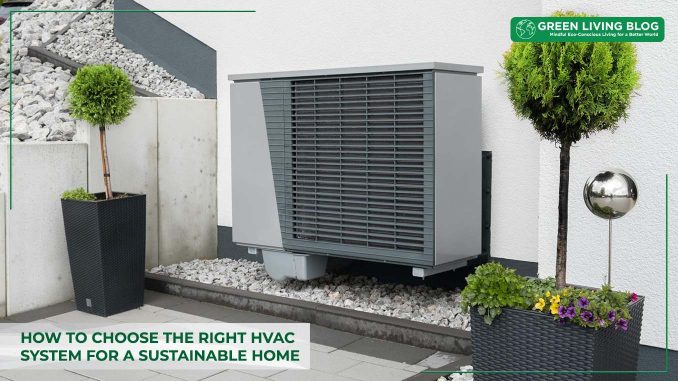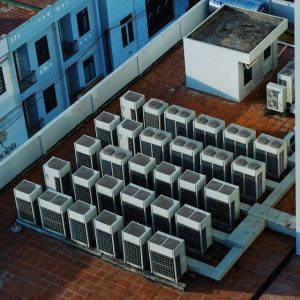
Energy efficiency is the foundation of a sustainable home.
Therefore, homeowners should lean into environmentally friendly heating, ventilation and air conditioning (HVAC) solutions to maximize indoor comfort and air quality.
The question most people wonder about is where to begin.
Why Choose an Energy-Efficient HVAC System?

The U.S. Energy Information Administration says heating and cooling account for 52% of a household’s energy consumption yearly, varying by season, location, square footage and equipment used. For instance, Northeast and Midwest homes run space heating more often in the winter than in the South, while the latter run the air conditioning more in the summer.
Most households rely on electricity for their HVAC systems, while those in colder Northeastern climates usually add heating oil to their energy mix. Each fuel source produces ample carbon dioxide and other greenhouse gas emissions.
Opting for energy-efficient heating and cooling for your home helps you reduce your environmental footprint, save money on monthly utility bills and improve indoor comfort. Of course, while the initial price is usually high, government subsidies can drive down costs, allowing you to reap the benefits of long-term savings.
Ratings and Certifications

It’s crucial to look for specific ratings and certifications when shopping for a sustainable HVAC system for your home, such as the following:
- Energy Star: A blue label indicating the product meets the stringent energy efficiency criteria set by the U.S. Environmental Protection Agency (EPA).
- Annual Fuel Utilization Efficiency: Measures the furnace’s ability to convert fuel to energy — a higher rating suggests greater efficiency and less energy waste.
- Heating Seasonal Performance Factor: Calculates how efficient a heat pump system is during the heating season — a higher rating equates to more energy savings.
The Seasonal Energy Efficiency Ratio (SEER) is among the most important ratings for HVAC products. A higher SEER score demonstrates how well the system cools your home using less electricity. While there isn’t a consensus over what a sufficient SEER should be, a score of 13 or 14 is standard for new air conditioners in most states. However, if energy efficiency is your goal for achieving a sustainable home, look for an HVAC system with a minimum SEER rate of 21.
These 5 Sustainable HVAC Systems Will Optimize Your Home’s Energy Efficiency

Homeowners have numerous options for sustainable HVAC to achieve optimal energy efficiency and air quality. Consider these five heating and cooling systems as you create your environmentally friendly home.
1. Smart Thermostats
Energy Star-rated smart thermostats learn your preferences and enable remote control from a smartphone to manage your home’s temperature. They also come with geofencing features to determine when you leave the house or are on the way home, automatically adjusting the temperature for greater comfort when you walk through the door.
Ensure the smart thermostat is compatible with your existing HVAC system. You can guarantee this by purchasing one from the same manufacturer as your heating and cooling equipment.
2. Geothermal Heat Pumps
Geothermal heat pumps draw heat from consistent temperatures underground. A deeply buried loop pipe circulates fluid to and from the home, keeping it warm in the winter and cool in the summer.
Geothermal is among the most efficient renewable energy sources. These heat pump systems produce minimal greenhouse gases, lower energy costs, and allow residences to maintain year-round comfort. Although homeowners usually pay more upfront, their long-term benefits make them a top choice.
3. Variable Refrigerant Flow Systems
Variable refrigeration flow (VRF) systems use advanced technology to adjust refrigerant flow and improve energy efficiency by zone. They achieve this through precision control of varying temperatures in different areas of the home.
Homeowners prefer the systems’ quietness and efficiency in delivering individualized comfort. They can also divert unused heat from one zone to another to avoid waste.
4. Solar-Powered HVAC
Solar photovoltaic air conditioners use one to three panels to produce electricity. With a hybrid system, sunlight delivers 90% of the power generation during the day, switching to conventional grid power at night. Meanwhile, off-grid systems utilize solar battery storage to compensate for nighttime HVAC energy consumption.
In the past decade, solar power has proven to be a clean, renewable energy source, and manufacturers have applied it to various products. These solar-powered HVAC units, in particular, lower electricity bills, particularly heating and cooling costs.
5. Energy Recovery Ventilation
Energy recovery ventilation (EVR) improves energy savings while maintaining top-notch indoor air quality. It achieves this by replacing stagnant indoor air with fresh outdoor air. Additionally, EVR systems transfer heat and moisture between two air streams to maintain indoor temperature consistency and limit energy waste.
Overall, EVR units allow homeowners to lower their utility bills by decreasing the frequency with which they must produce incoming hot or cold air from scratch and ensuring a healthier environment inside the home.
Invest in Your Comfort While Saving the Planet
Switching your existing HVAC system out for an energy-efficient model is a wise choice when creating a more sustainable home. In addition to reducing your household’s carbon footprint for a cleaner planet, you’ll benefit from impressive energy savings, optimal comfort and better air quality.
![]()
Author Profile

- Eco Warrior by day, Eco Blogger by night trying to get the eco balance right.
Latest entries
 Green GuidesNovember 3, 2025The Beginner’s Guide to Making Your Own Nontoxic Candles at Home
Green GuidesNovember 3, 2025The Beginner’s Guide to Making Your Own Nontoxic Candles at Home Green Home GuidesOctober 14, 2025What are Eco-Friendly Tissue Options for Modern UK Homes?
Green Home GuidesOctober 14, 2025What are Eco-Friendly Tissue Options for Modern UK Homes? Best practicesSeptember 17, 20253 Ways Young Families Can Commit to Sustainable Living
Best practicesSeptember 17, 20253 Ways Young Families Can Commit to Sustainable Living EnvironmentSeptember 9, 2025Eco-friendly Gardening on a Budget: 6 Sustainable Choices that make a Difference
EnvironmentSeptember 9, 2025Eco-friendly Gardening on a Budget: 6 Sustainable Choices that make a Difference





Leave a Reply
You must be logged in to post a comment.